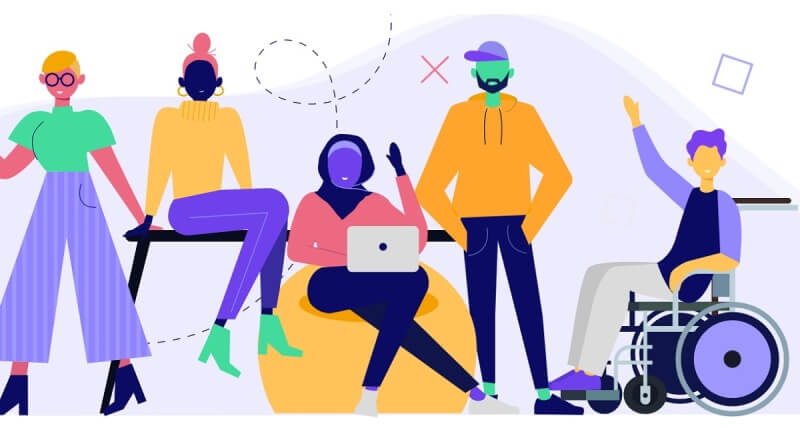Introduction:
In the dynamic realm of mobile app development, creating visually stunning and functionally robust applications is a shared goal among designers and developers. The synergy between design and code is crucial in realizing this vision, and the Figma to Flutter code workflow has emerged as a cornerstone for achieving such harmony.
In this article, we will unravel the intricacies of this workflow, providing insights into how the transition from Figma designs to Flutter code contributes to building beautiful apps. Additionally, we’ll explore the role of DhiWise Flutter App Builder in demystifying this process and empowering developers to bring their design aspirations to life seamlessly.
The Figma to Flutter Code Workflow: A Symbiotic Journey
Design Precision and Consistency:
Figma has risen to prominence as a versatile design tool, offering a collaborative space for designers to conceptualize and refine app interfaces. However, the real challenge lies in translating these intricate designs into a functional Flutter codebase. The workflow from Figma to Flutter is characterized by a meticulous approach to maintaining design precision and consistency throughout the development process.
The Manual Conversion Struggle:
Manually converting Figma designs to Flutter code often poses challenges, especially in large and complex projects. Developers must meticulously replicate the design elements, ensuring that every pixel aligns perfectly with the original vision. This manual process is time-consuming, prone to errors, and may hinder the agility required in modern app development.
The Essence of Beautiful Apps:
Beautiful apps transcend mere aesthetics; they encapsulate a seamless user experience. Achieving this requires a seamless integration between design and code, where the visual allure of Figma designs seamlessly transforms into interactive, responsive, and high-performance Flutter applications.
Demystifying the Figma to Flutter Code Workflow
Step 1: Figma Design Importation
The journey begins with the importation of Figma designs into the Flutter development environment. This involves bringing the visual elements, color schemes, typography, and layout structures into the Flutter workspace. The challenge here lies in maintaining the fidelity of the design while preparing it for code generation.
Step 2: Code Generation Precision
One of the key demystifying aspects is the automated code generation process. This involves leveraging tools that analyze Figma designs and automatically translate them into Flutter-compatible code. The precision of this process is paramount, ensuring that the generated code accurately reflects the design elements, from widgets to intricate animations.
Step 3: Widget Customization and Optimization
While automation expedites the initial code generation, the demystification process also involves a level of customization and optimization. Developers can fine-tune the generated code to align with specific project requirements, ensuring that the Flutter widgets not only mimic the design but also adhere to performance and functionality standards.
Step 4: Real-Time Collaboration and Iteration
Demystifying the workflow also implies removing barriers between designers and developers. Real-time collaboration becomes essential, allowing both parties to work concurrently on the project. This iterative process ensures that any changes made in the Figma design are instantly reflected in the Flutter code, fostering a dynamic and efficient development environment.
Step 5: Responsive Design Implementation
The demystification journey extends to addressing the challenges of responsive design. Ensuring that the Flutter app seamlessly adapts to various screen sizes and orientations is critical. This step involves fine-tuning layouts, optimizing UI elements, and ensuring a consistent user experience across diverse devices.
DhiWise Flutter App Builder: Transforming the Figma to Flutter Experience
Streamlining the Workflow:
DhiWise Flutter App Builder stands as a game-changer in the Figma to Flutter code workflow. It addresses the complexities associated with manual conversions and amplifies the efficiency of the entire process. The platform streamlines the workflow, allowing developers to focus on the creative aspects of building beautiful apps rather than getting bogged down by the intricacies of code translation.
Automated Code Generation:
At the heart of DhiWise’s capabilities is its automated code generation feature. By intelligently analyzing Figma designs, the platform generates Flutter code with precision, reducing the manual effort required. This not only accelerates the development process but also minimizes the scope for errors, ensuring that the translated code faithfully represents the design elements.
Ready-To-Use Templates and Screen Libraries:
Dhiwise presents production-ready app templates and a comprehensive screen library. These meticulously crafted templates serve as a solid foundation for building robust applications, saving valuable time and resources.
With Dhiwise’s production-ready app templates, developers can accelerate their workflow, ensuring a quicker time-to-market for their projects. The accompanying screen library provides a diverse range of pre-designed screens, enhancing the visual appeal and functionality of apps.
Real-Time Collaboration:
DhiWise fosters real-time collaboration between designers and developers. This collaborative environment enables iterative design adjustments, with changes made in Figma instantly reflected in the DhiWise Flutter App Builder with a Design sync feature. This level of synchronization reduces development cycles and ensures that the final app reflects the intended design nuances.
Customization and Theming:
While DhiWise automates much of the code generation, it also empowers developers with the flexibility to customize and theme the generated code. This ensures that the Flutter app not only mirrors the Figma design but also accommodates unique project requirements and branding elements.
Conclusion:
Demystifying the Figma to Flutter code workflow is pivotal in the pursuit of building beautiful apps. The symbiotic relationship between design precision and code generation, coupled with streamlined processes and real-time collaboration, is essential for success.
DhiWise Flutter App Builder emerges as a transformative tool in this journey, addressing the challenges associated with manual conversions and empowering developers to translate Figma designs into Flutter code with efficiency, accuracy, and a focus on aesthetics.
With DhiWise, the bridge between Figma designs and beautiful Flutter apps becomes not only clearer but also more accessible and delightful to traverse.
Follow Techdee for more!
